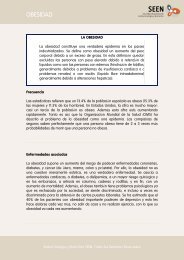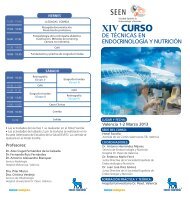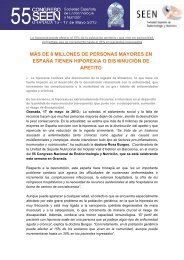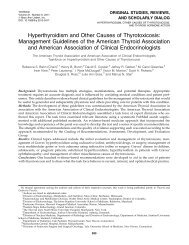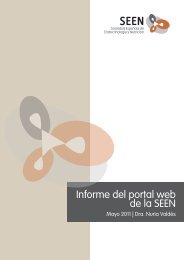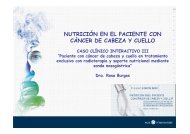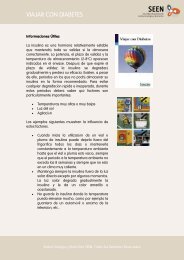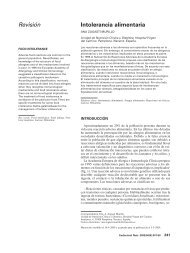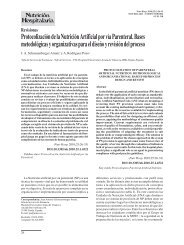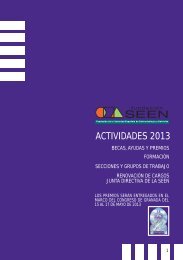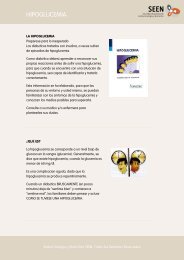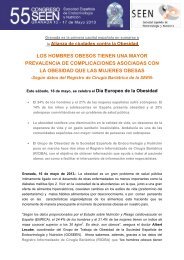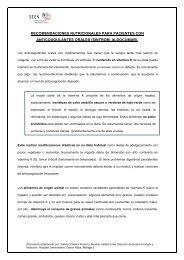Basic Concepts of Fluid and Electrolyte Therapy
Basic Concepts of Fluid and Electrolyte Therapy
Basic Concepts of Fluid and Electrolyte Therapy
You also want an ePaper? Increase the reach of your titles
YUMPU automatically turns print PDFs into web optimized ePapers that Google loves.
vide a simple description <strong>of</strong> the most common forms <strong>of</strong> the simple<br />
acid-base disorders. Expert advice should be sought if it is suspected<br />
that the patient has a more complex form <strong>of</strong> acid-base disorder.<br />
Approaches to acid-base balance<br />
There are essentially two different ways to approach acid-base disorders.<br />
The traditional Schwartz-Bartter approach which accepts the<br />
Bronsted-Lowry definition <strong>of</strong> acids as proton donors <strong>and</strong> bases as<br />
proton acceptors. The hydrogen ion concentration is a function <strong>of</strong><br />
the ratio between the PCO 2<br />
<strong>and</strong> the serum bicarbonate (as above).<br />
The traditional approach utilises the anion gap calculation to classify<br />
acid-base disturbances <strong>and</strong> is the method used in this chapter.<br />
The Stewart approach, termed the Strong Ion Difference (SID), is<br />
based on the principle that the serum bicarbonate concentration<br />
does not alter blood pH. This approach is favoured by intensivists<br />
<strong>and</strong> anaesthetists <strong>and</strong> is described separately towards the end <strong>of</strong><br />
this chapter.<br />
Clinical presentation<br />
It is important in every acutely ill patients to consider whether there<br />
may be an underlying acid-base disturbance. Serum bicarbonate <strong>and</strong><br />
chloride are not st<strong>and</strong>ard components <strong>of</strong> all U&E reports <strong>and</strong>,<br />
therefore, may have to be specifically requested. Severe acidaemia<br />
(pH 7.6) results in irritability <strong>of</strong> cardiac <strong>and</strong> skeletal<br />
muscle.<br />
63




